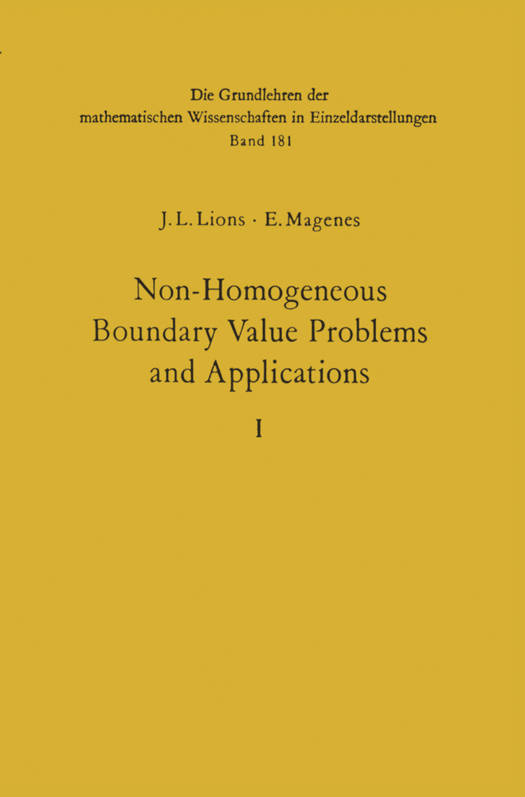
- Afhalen na 1 uur in een winkel met voorraad
- Gratis thuislevering in België vanaf € 30
- Ruim aanbod met 7 miljoen producten
- Afhalen na 1 uur in een winkel met voorraad
- Gratis thuislevering in België vanaf € 30
- Ruim aanbod met 7 miljoen producten
Zoeken
€ 104,95
+ 209 punten
Uitvoering
Omschrijving
1. We describe, at first in a very formaI manner, our essential aim. n Let m be an op en subset of R, with boundary am. In m and on am we introduce, respectively, linear differential operators P and Qj' 0 i 'V. By "non-homogeneous boundary value problem" we mean a problem of the following type: let f and gj' 0 i 'v, be given in function space s F and G, F being a space" on m" and the G/ s spaces" on am"; j we seek u in a function space u/t "on m" satisfying (1) Pu = f in m, (2) Qju = gj on am, 0 i 'v«])). Qj may be identically zero on part of am, so that the number of boundary conditions may depend on the part of am considered 2. We take as "working hypothesis" that, for fEF and gjEG, j the problem (1), (2) admits a unique solution u E U/t, which depends 3 continuously on the data . But for alllinear probIems, there is a large number of choiees for the space s u/t and {F; G} (naturally linke d together). j Generally speaking, our aim is to determine families of spaces 'ft and {F; G}, associated in a "natural" way with problem (1), (2) and con- j venient for applications, and also all possible choiees for u/t and {F; G} j in these families.
Specificaties
Betrokkenen
- Auteur(s):
- Vertaler(s):
- Uitgeverij:
Inhoud
- Aantal bladzijden:
- 360
- Taal:
- Engels
- Reeks:
- Reeksnummer:
- nr. 181
Eigenschappen
- Productcode (EAN):
- 9783642651632
- Verschijningsdatum:
- 15/11/2011
- Uitvoering:
- Paperback
- Formaat:
- Trade paperback (VS)
- Afmetingen:
- 156 mm x 234 mm
- Gewicht:
- 530 g

Alleen bij Standaard Boekhandel
+ 209 punten op je klantenkaart van Standaard Boekhandel
Beoordelingen
We publiceren alleen reviews die voldoen aan de voorwaarden voor reviews. Bekijk onze voorwaarden voor reviews.








